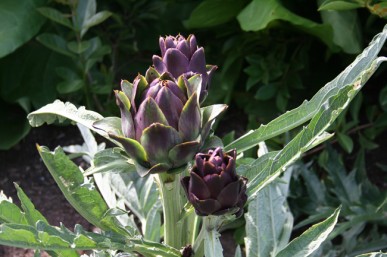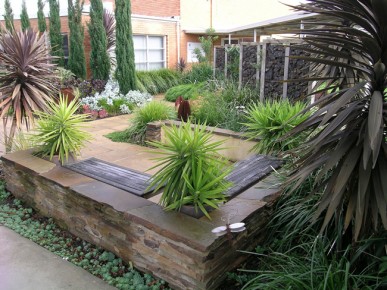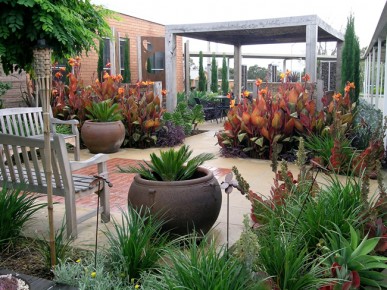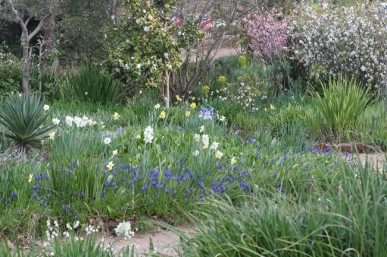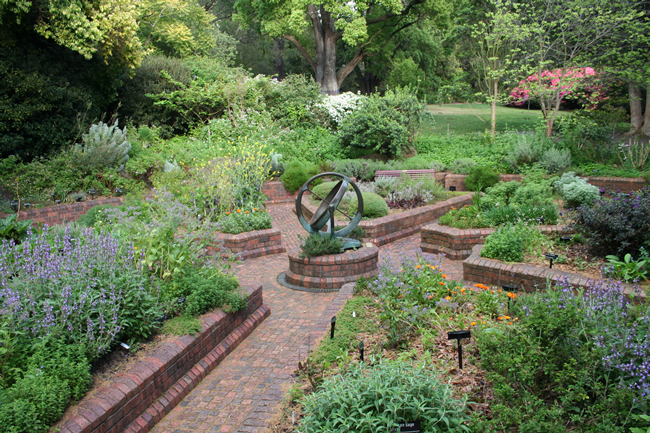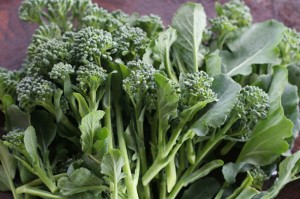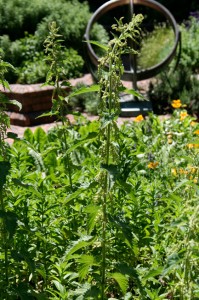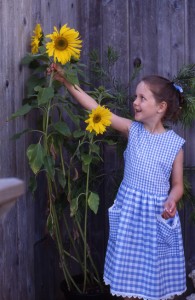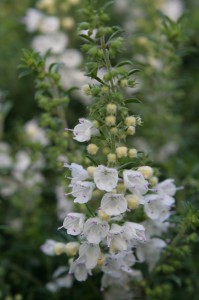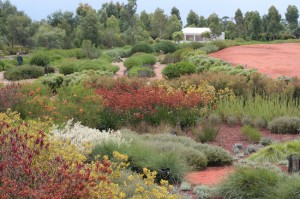Artichokes (Cynara scolymus) are striking plants that are both beautiful and useful. The arching soft grey green leaves and huge vibrant purple thistle flowers make a dramatic statement and add structure and contrast foliage. But they do take up a lot of space so make sure you’ve got plenty of room before planting. These short lived perennials are native to the Mediterranean region and take about 6 months from planting until they produce flower buds. The most readily available cultivars are Green globe, Violetta and Imperial Star.
Artichokes can be grown from seed but seed germination is often patchy and the quality varies enormously, so it is better to grow new plants by purchasing one or detaching and replanting a rooted offset. To remove offsets push a spade down carefully between the main stem and the offset so that you remove the small plant with leaves and roots. Trim off any outer leaves and woody roots and replant. Artichokes are best planted in mid to late winter in frost-free areas, or spring where there are frosts. Continue Reading
Horticultural therapist and garden designer Steven Wells has a passion for connecting people with plants for their health and well being. He has successfully blended this passion and his careers to positively impact the lives of those within healthcare settings. Steven combines these careers within Austin Health, having established and now coordinating the Horticultural Therapy Program, alongside his nursing career and also designing and implementing the successful therapeutic gardens. Now one of his gardens has been short listed for an award in America.
The Healthcare Design Magazine Remodel/Renovation Competition in America invited submissions for recently constructed Emergency Departments and Respite Areas. ‘The Garden Rooms’ at the Royal Talbot Rehabilitation Centre, Melbourne, is a finalist in the ‘Respite Area’ category. The design intent of this garden was to create intimate spaces for patients and their families to foster ‘normalizing’ moments for them during their hospitalization and to provide staff with places of respite too. Staff, patients and families were informally involved during the design stage. Patients, staff and volunteers helped to plant the garden, with various plants having been propagated by patients in the horticultural therapy program.
It would be wonderful if this inspirational garden won this prestigious award. You can help by voting.
To vote for the garden, use the link below. You’ll need to vote for PART 1 first, which is the Emergency Department Area, and after submitting your selection you will be automatically directed to PART 2 of the voting process: Respite Areas. Comments can also be added.
I have just spent a wonderful weekend at Castlemaine in rural Victoria, talking to and learning from gardeners from all over Victoria. Budafest was held to raise money for the historic home and garden, Buda, but also to connect with and inform gardeners about growing communities. We found out about public gardens and the greening of public spaces, gardening for produce and pleasure, community gardening and heritage gardens. I learnt things like: Average Australian houses are bigger than any other houses in the world (even 10% bigger than American houses); that we are having more 1 in 100 year weather events; that we need to preserve our public spaces and how important they are to our well-being; that landscapes are designed for people so we need to understand how people relate to them and that there is such a thing as Nature Deficit Disorder. All of this and more, just from the talk given by John Raynor from the University of Melbourne.
Continue Reading
It’s starting to feel like spring at last and this is a time when most plants start moving and growing again and it is an especially good time for herbs. Herbs grow prolifically through spring, so plant them now and reap a bountiful harvest of fragrant leaves and flowers in a very short time. Many of you will already have common herbs like parsley, sage, rosemary and thyme, growing in your gardens, but what about others like tarragon, or hyssop or five-seasons herb. Let me introduce you to some less common culinary herbs that are easy to grow, look fantastic in the garden and are really useful in the kitchen. Continue Reading
I love broccoli for its versatility, because it is so easy to grow and because it’s full of the nutrients and anti-oxidants that are so important in combating our modern ills. Broccoli is in the same family as cabbages, Brussels sprouts, cauliflower, mustards and even wall flowers and stocks. I planted seed into small pots in mid summer and planted the seedlings out in the garden in late summer and have been harvesting a handful of flower heads every few days for months now. In cool and temperate climates, broccoli can be planted for most of the year except perhaps the middle of winter, so now is good time to get some seeds in. For years now I have only grown the sprouting types like Green Calabrese and Purple Sprouting. These grow with an initial ‘head’ but once this has been harvested, goes on producing small florets from side branches for a few months more. Continue Reading
Of course not all weeds are edible. In fact some are very poisonous, but there are a number that not only taste good but are full of useful vitamins and minerals. Others can be used as remedies for simple complaints such as colds, cuts or stings. Most also have a fascinating history.
One of the most useful weeds found in Australian gardens or nearby wastelands is the common stinging nettle (Urtica dioica). Before you recoil in horror I’m not suggesting anyone use them in the way the Romans did, who when they first came to England were advised to flog themselves with nettles to get their circulation moving on cold English mornings. Life must have been considerably harder then. Flogging with nettles or ‘urtication’ is still sometimes recommended as a treatment for arthritis or rheumatism. At the very least nettles should be pulled out (wearing gloves) and added to the compost as they add minerals and speed the composting process. Drying or cooking de-activates the sting but if you do get stung, rub the affected part with a broken nettle stem to stop the pain. Continue Reading
By Ellen
Mum always thought it was only a matter of time before I became I keen gardener. But on the eve of my 22nd birthday I still don’t feel any strong desire to rave about the brilliance of borage or the magnificence of mint. Growing up with my mother Penny Woodward was always a trade off between gardens and ice cream, gardens and play grounds, gardens and mini golf. My brother and I went with her to the gardens, if we behaved ourselves we got ice cream (or a visit to a play ground, or mini golf). This being said, some of the most memorable hours of my childhood were in gardens. Especially Heronswood in Dromana on the Mornington Peninsula, watching the goldfish and proudly identifying the elephant garlic. I came to know this allium quite well over the ten years Mum spent writing her book Garlic and friends. Garden visits took us all over Australia, to find mazes, Avenues of Honour, new gardens and plant-oriented ways to write about our family holidays. Continue Reading
Little known and used winter savory Satureja montana comes into its own in winter. As the days draw in and cold nights become more frequent, its warm spicy fragrance and taste enhances the flavour of slow cooked soups and stews. It grows as a small woody shrub with tiny dark green, opposite leaves and white flowers that grow in the leaf axils towards the ends of the somewhat sprawling branches. There is also a prostrate variety that has coarser leaves, larger white flowers and is much lower growing, but is otherwise similar. Other varieties have pink flowers. It is easily grown from seed or cuttings, or by detaching rooted pieces and replanting. This is best done in spring, but is usually also successful in autumn. Keep the plants neat by trimming back after flowering. Winter savory is in the same family (Lamiaceae) as thyme and rosemary and likes similar growing conditions. In other words a well-drained sandy loam soil and an open, sunny position. But I have found them to be tough little plants that thrive in a variety of positions as long as they do not stay wet for long periods. Continue Reading
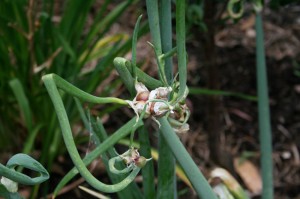
Tree onions produce bulbils instead of flowers. The bulbils sprout so that the plant looks like a small tree.
In the early 1900′s the American writer O. Henry wrote that “A stew without onion is worse’n a matinée without candy” and I’m sure that chefs all over the world would agree with him. Cooks and gardeners are familiar with the common bulb onion (Allium cepa), different cultivars of which provide a range of oniony flavours but what about the other onions: shallots and the ever-ready, potato and tree onions? When Jonathan Swift wrote in 1700
“But lest your kissing should be spoil’d,
Your onions must be thorough boil’d”
he was probably talking about these alternate onions which have been grown and valued by gardeners for centuries. They are usually propagated from bulbs which multiply to form more bulbs, rather than by planting seed. They are also disease and pest resistant making these onions much easier to grow than common bulb onions. Continue Reading
I know this is not about edible or useful plants but I think it’s really exciting. Although Australian designers have entered gardens in previous years, this year is the first time that Australia will have a display garden in Main Avenue. Quite a coup considering there are only eight gardens in this avenue.
The Royal Horticultural Society’s Chelsea Flower Show is arguably the world’s most famous garden show. For almost 100 years this event has been showcasing plants and gardens in the grounds of the Royal Hospital in Chelsea, London. This year it takes place form 24th to 28th of May. Most of us will not be able to be there in person but we can follow the hard work and excitement of the the garden’s construction on their blog. The Australian Garden at Chelsea. This Australian entry is based on the multi-award winning Australian Garden at the Botanic Gardens in Cranbourne, Victoria, the second stage of which will open in 2012. The show garden at Chelsea has been created by renowned designer Jim Fogarty and tells the story of water as it journeys from the outback to the coast. The display garden will contain more than 2000 Australian native plants and works by Australian sculptors. Even the lawn is a native grass. So over the next three weeks, keep an eye on their blog and follow the construction of the garden. This is the culmination of more than a year of work and planning. Lets hope Australia wins another gold, or even best in show! — PW
The great news is that the garden has won a gold medal, one of only a handful. Huge congratulations to everyone involved! Go to their site to see the finished garden and link to the RHS site to see all the other winners.

